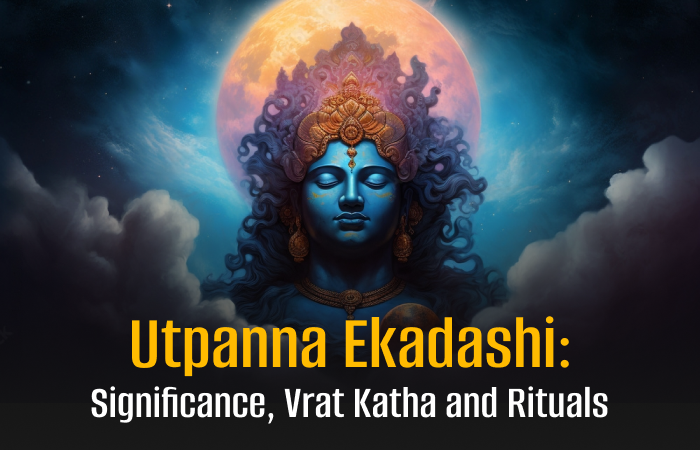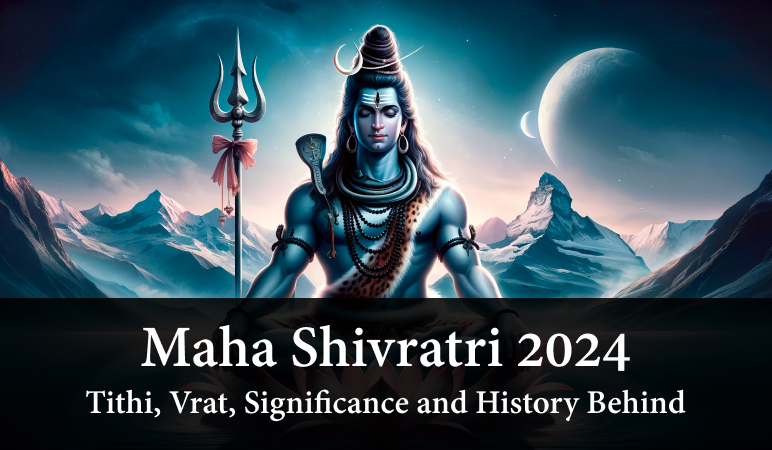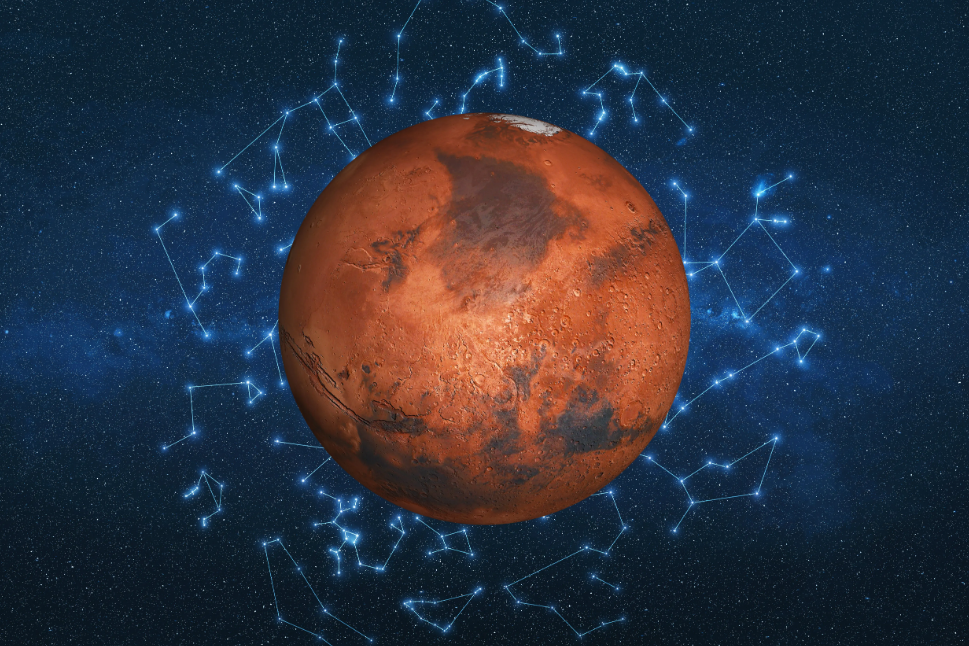Utpanna Ekadashi: Significance, Vrat Katha and Rituals

Utpanna Ekadashi falls on the Krishna Paksha of the month of Margashirsha and is considered one of the most challenging fasts. In a year, there are a total of 24 Ekadashis, with two additional ones occurring in leap years. Utpanna Ekadashi, also known as Utpati Ekadashi, is significantly the first Ekadashi following Kartik Purnima. Here, we will tell you about the story behind Ekadashi, the fasting details, and the significance of this Ekadashi. Let’s get started.
Utpanna Ekadashi: Significance and Vrat Puja
Utpanna Ekadashi is associated with the birth of Maa Ekadashi and how she saved and helped Bhagwan Vishnu defeat the Murasura. During Satyugya, Murasura conquered Swarga Lok, causing worry among Devtas who went to Bhagwan Shiva for help. Bhagwan Shiva directed them to approach Bhagwan Narayana for assistance. Upon hearing their plea, Bhagwan Vishnu decided to end Murasura’s oppressive rule.
A fierce war took place between Bhagwan Vishnu and Murasura, lasting for a decade. Even though all the other Asurs were killed, Murasura remained invincible. Tired from the prolonged battle, Bhagwan Vishnu retreated to Badrikashram, where he entered a cave named Hemvati and entered Yoganidra for a deep meditative sleep. Murasura, determined to kill Bhagwan Vishnu, attacked him at Hemvati.
During this moment, a divine and auspicious lady emerged from Bhagwan Vishnu’s body. She confronted Murasura, engaged in battle, and ultimately defeated him. When Bhagwan Vishnu woke up, he was pleasantly surprised to find Murasura dead. In appreciation, he blessed the divine lady, naming her Utpanna Ekadashi, saying that people would worship her.
Utpanna Ekadashi holds profound significance. Observing a fast on this day with a pure heart is believed to absolve individuals of past sins. It is considered auspicious to commence Ekadashi fasting by observing Utpanna Ekadashi. This sacred day symbolises the triumph of Bhagwan Vishnu over Murasura with the help of Maa Ekadashi. Devotees worship Maa Ekadashi and Bhagwan Vishnu on this auspicious occasion. Following these traditions is believed to cleanse one of all past and present sins, bringing them closer to spiritual salvation. Observing a fast on Utpanna Ekadashi is deemed equivalent to fasting for all three Tridevs and the devotee gets the divine blessings.
Rituals to be followed on Utpanna Ekadashi
It involves two parts: Ekadashi Vrat Fasting and Ekadashi worship rituals. We will tell you about that.
Ekadashi Vrat Fasting
- Begin fasting at sunrise and continue until the next day.
- Do not eat any food during this period, and perform Daan and charitable activities according to your capacity. The act of donation should precede the conclusion of the fast. It can include anything from money to clothes.
- Organising a Brahmin Bhoj is considered very auspicious.
Ekadashi Vrat Rituals and Puja Vidhi
- On Utpanna Ekadashi, devotees wake up before sunrise, take a bath, and worship Bhagwan Krishna during Brahma Muhurta.
- Wear clean clothes, then offer prayers to Bhagwan Krishna and sprinkle Gangajal in the house.
- Idols of Lord Ganesha and Lord Krishna are placed for worship, and Tulsi Manjari is offered to Lord Ganesha.
- Next, incense, lamp, naivedya, roli, and akshat are presented to Bhagwan Vishnu, along with the worship of Maa Ekadashi.
- After the worship, devotees perform aarti, distribute prasad, and prepare a special bhog to please the deities and seek their blessings.
- They also chant mantras and bhajans.
- It is essential to conduct the puja with a pure heart and mind, free from any ill intentions. Listening to the Utpanna Ekadashi Vrat Katha and remembering the birth of Maa Ekadashi is also a crucial part of the observance.
One of the most powerful Bhagwan Vishnu Mantra
शान्ताकारं भुजगशयनं पद्मनाभं सुरेशं
विश्वाधारं गगनसदृशं मेघवर्णं शुभाङ्गम् ।
लक्ष्मीकान्तं कमलनयनं योगिभिर्ध्यानगम्यं
वन्दे विष्णुं भवभयहरं सर्वलोकैकनाथम् ॥
Shaanta-[A]akaaram Bhujaga-Shayanam Padma-Naabham Sure[a-Ii]sham
Vishva-[A]adhaaram Gagana-Sadrsham Megha-Varnnam Shubha-Anggam |
Lakssmii-Kaantam Kamala-Nayanam Yogibhir-Dhyaana-Gamyam
Vande Vissnnum Bhava-Bhaya-Haram Sarva-Lokai[a-E]ka-Naatham ||
In case you have any confusion regarding any aspect of the Ekadashi be it rituals to be followed or your local timings, our pundits and astrologers are here to guide you. They will make sure you can successfully perform the Ekadashi rituals and get immense benefits.
Frequently Asked Questions
Q: What food items can one consume during the Uthpana Ekadashi Vrat?
A: During the Ekadashi Vrat, individuals can consume fruits like bananas, apples, oranges, or papaya. Additionally, cucumber, radish, pumpkin, lemon, and coconut are also permissible. When it comes to spices, only black pepper is allowed during Ekadashi fasting.
Q: Why do people avoid rice during Ekadashi Vrat?
A: On Ekadashi, people avoid consuming rice due to the gravitational effects of the Moon. The Moon’s gravitational force leads to high and low tides in rivers, attracting water bodies. This phenomenon, occurring on Ekadashi Tithi, is considered unfavourable for the human digestive system, leading many to abstain from rice during their meals.<









